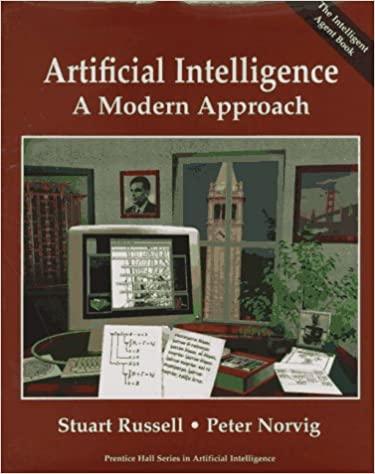1.2 We characterized the definitions of AI along two dimensions, human vs. ideal and thought vs. action....
Question:
1.2 We characterized the definitions of AI along two dimensions, human vs. ideal and thought vs. action. But there are other dimensions that are worth considering. One dimension is whether we are interested in theoretical results or in practical applications. Another is whether we intend our intelligent computers to be conscious or not. Philosophers have had a lot to say about this issue, and although most AI researchers are happy to leave the questions to the philosophers, STRONG AI there has been heated debate. The claim that machines can be conscious is called the strong AI WEAKAI claim; the weak AI position makes no such claim. Characterize the eight definitions on page 5 and the seven following definitions according to the four dimensions we have mentioned and whatever other ones you feel are helpful.
Artificial intelligence is ...
a. "a collection of algorithms that are computationally tractable, adequate approximations of intractably specified problems" (Partridge, 1991)
b. "the enterprise of constructing a physical symbol system that can reliably pass the Turing Test" (Ginsberg, 1993)
c. "the field of computer science that studies how machines can be made to act intelligently"
(Jackson, 1986)
d. "a field of study that encompasses computational techniques for performing tasks that apparently require intelligence when performed by humans" (Tanimoto, 1990)
e. "a very general investigation of the nature of intelligence and the principles and mechanisms required for understanding or replicating it" (Sharpies et ai, 1989)
f. "the getting of computers to do things that seem to be intelligent" (Rowe, 1988).
Step by Step Answer:

Artificial Intelligence A Modern Approach
ISBN: 9780131038059
1st Edition
Authors: Stuart Russell, Peter Norvig






